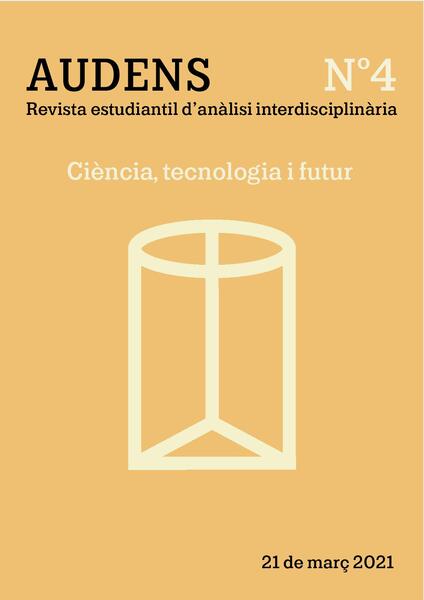When Accidents Become Design Choices: Navigation Systems, Rat-Running, and AI Safety
Paraules clau:
Optimisation Problem, Search Strategies, AI Safety, Navigation Systems,Resum
Machine learning algorithms work particularly well if we want to find the best solution to a given problem from the set of all possible solutions. However, such an unprecedented ability to solve optimisation problems only stresses the need to carefully pick out the right goal to be optimised. In this regard, and taking route-planning services as a guiding example, I claim that the current problem definition for route-planning algorithms prompts disruptive driving practices such as intelligent rat-running which create, in turn, global problems by intending to optimise local ones. In order to avoid this, I defend that the design approach to such algorithms should aim for hybrid search strategies that constrain the local benefit to the global costs of a given solution, in order to set the grounds for a safer AI in the future.Referències
Acemoglu, D., Makhdoumi, A., Malekian, A. and Ozdaglar, A., 2018. Informational Braess’ paradox: The effect of information on traffic congestion. Operations Research, 66(4), pp.893-917. Amodei, D., Olah, C., Steinhardt, J., Christiano, P., Schulman, J. and Mané, D., 2016. Concrete problems in AI safety. arXiv preprint arXiv:1606.06565. Aoki, S. and Rajkumar, R., 2017, April. A merging protocol for self-driving vehicles. In 2017 ACM/IEEE 8th International Conference on Cyber-Physical Systems (ICCPS) (pp. 219-228). IEEE. Deb, K., 2014. Multi-objective optimization. In Search methodologies (pp. 403-449). Springer, Boston, MA. Frank, M., 1981. The braess paradox. Mathematical Programming, 20(1), pp.283-302. Kojima, A., Elfferding, S. and Kubota, H., 2015. Intelligent rat-runners: impact of car navigation systems on safety of residential roads. International journal of intelligent transportation systems research, 13(1), pp.9-16. Mehta, H., Kanani, P. and Lande, P., 2019. Google Maps. Int. J. Comput. Appl, 178, pp.41-46. Petrovska, N., Stevanovic, A., "Traffic Congestion Analysis Visualisation Tool," 2015 IEEE 18th International Conference on Intelligent Transportation Systems, Las Palmas, 2015, pp. 1489-1494, doi: 10.1109/ITSC.2015.243. Sanders, P. and Schultes, D., 2007, June. Engineering fast route planning algorithms. In International Workshop on Experimental and Efficient Algorithms (pp. 23-36). Springer, Berlin, Heidelberg. Suarez, F. F. (2003) Battles for technological dominance: an integrative framework. Research Policy, 33(2), pp. 271-286. Steinberg, R. and Zangwill, W.I., 1983. The prevalence of Braess' paradox. Transportation Science, 17(3), pp.301-318. Russell, S.J. and Norvig, P., 2010. Artificial Intelligence-A Modern Approach, Third International Edition. Vanderhaegen, F., Chalmé, S., Anceaux, F. and Millot, P., 2006. Principles of cooperation and competition: application to car driver behavior analysis. Cognition, Technology & Work, 8(3), pp.183-192. Vinitsky, E., Kreidieh, A., Le Flem, L., Kheterpal, N., Jang, K., Wu, C., Wu, F., Liaw, R., Liang, E. and Bayen, A.M., 2018, October. Benchmarks for reinforcement learning in mixed-autonomy traffic. In Conference on Robot Learning (pp. 399-409). Wu, C., Bayen, A.M. and Mehta, A., 2018, May. Stabilizing traffic with autonomous vehicles. In 2018 IEEE International Conference on Robotics and Automation (ICRA) (pp. 1-7). IEEE.
Descàrregues
Publicades
Número
Secció
Llicència
L'autor/a que publica en aquesta revista està d'acord amb els termes següents:- L'autor/a conserva els drets d’autoria i atorga a la revista el dret de primera publicació de l’obra.
- Els textos es difondran amb la llicència de Reconeixement de Creative Commons, la qual permet compartir l’obra amb tercers, sempre que en reconeguin l’autoria, la publicació inicial en aquesta revista i les condicions de la llicència.


